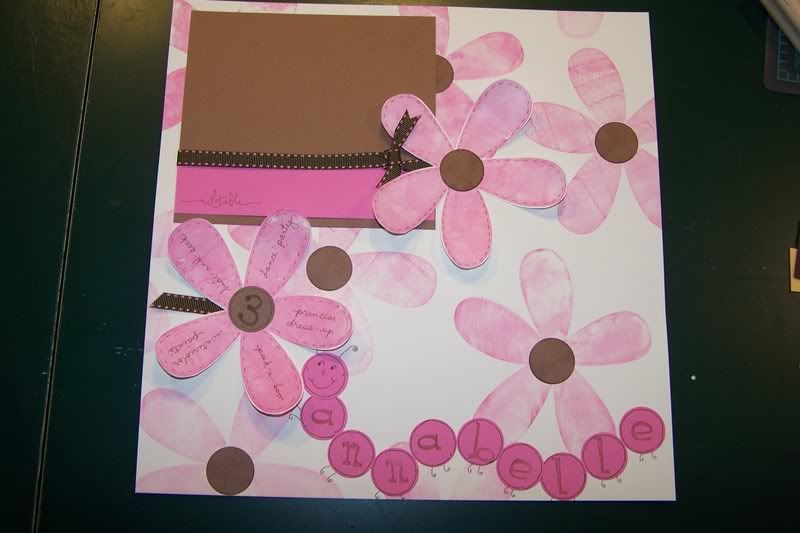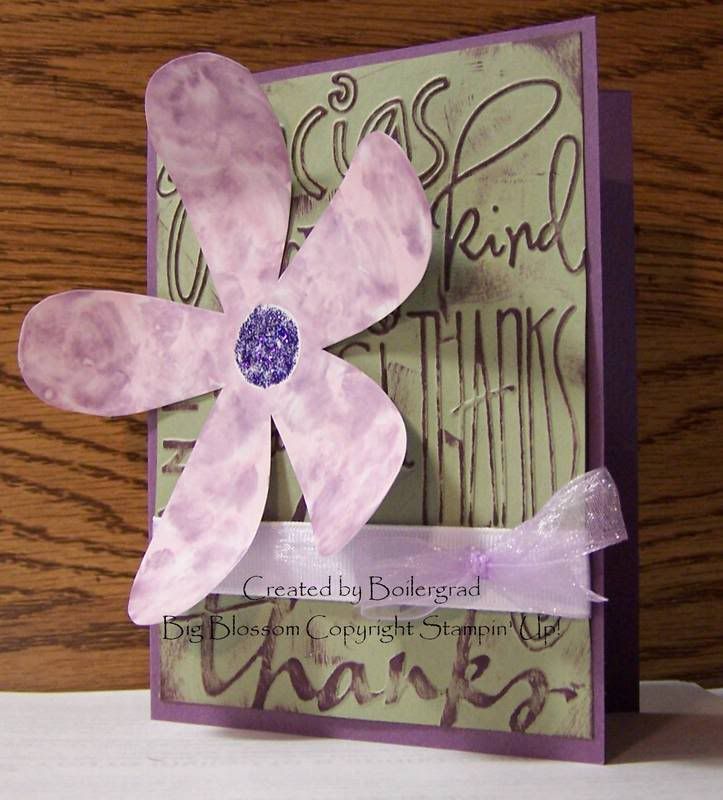
I've had a few people who were intrigued by how I made the grassy background on the card in my post earlier this week. So, I thought I'd make a similar card and create a picture tutorial for you all.
First, start out with a 4" x 5.25" rectangle in a light green color. I used Certainly Celery. You'll need at least two colors of green inkpads as well, one light and one darker. I used Certainly Celery and Old Olive. Open your lighter green inkpad and using only the edge of one side, swipe it down your card from top to bottom. I like to hold the paper in my left hand and the inkpad in the other, but you could do it with the paper laying on the table. If you do it that way, make sure you've protected your table surface. Continue swiping the edge of the inkpad down the length of the card, allowing for some lines to be diagonal and some a bit straighter.
 Imagine how grass looks in your yard. As it grows up, some blades overlap one another and they don't all lean the same direction. The same look should be replicated in the swiped ink on your card. After you have filled your paper with "grass," you can use the same technique to make a few flower stems and leaves. You'll want the length and width of your lines to be somewhat proportioned to the size of the flower image you plan on using. In my example, I swiped two flower stems and added two leaves on each stem.
Imagine how grass looks in your yard. As it grows up, some blades overlap one another and they don't all lean the same direction. The same look should be replicated in the swiped ink on your card. After you have filled your paper with "grass," you can use the same technique to make a few flower stems and leaves. You'll want the length and width of your lines to be somewhat proportioned to the size of the flower image you plan on using. In my example, I swiped two flower stems and added two leaves on each stem.

After you have done your grass and stems, you can add your flower blossoms and other card embellishments. In my example, I used the large flower from Stampin' Up!'s Delight in Life set. I stamped it with Staz-On ink on glossy white paper. Then, I highlighted the centers and edges of the petals with wax from a white birthday candle. After that, I used my brayer to apply Yo-Yo Yellow ink to the entire blossom. Then, I used a tissue to wipe the excess ink off of the blossoms. That left me with a white area highlighted on each petal. I was very happy with the outcome of this technique!


















